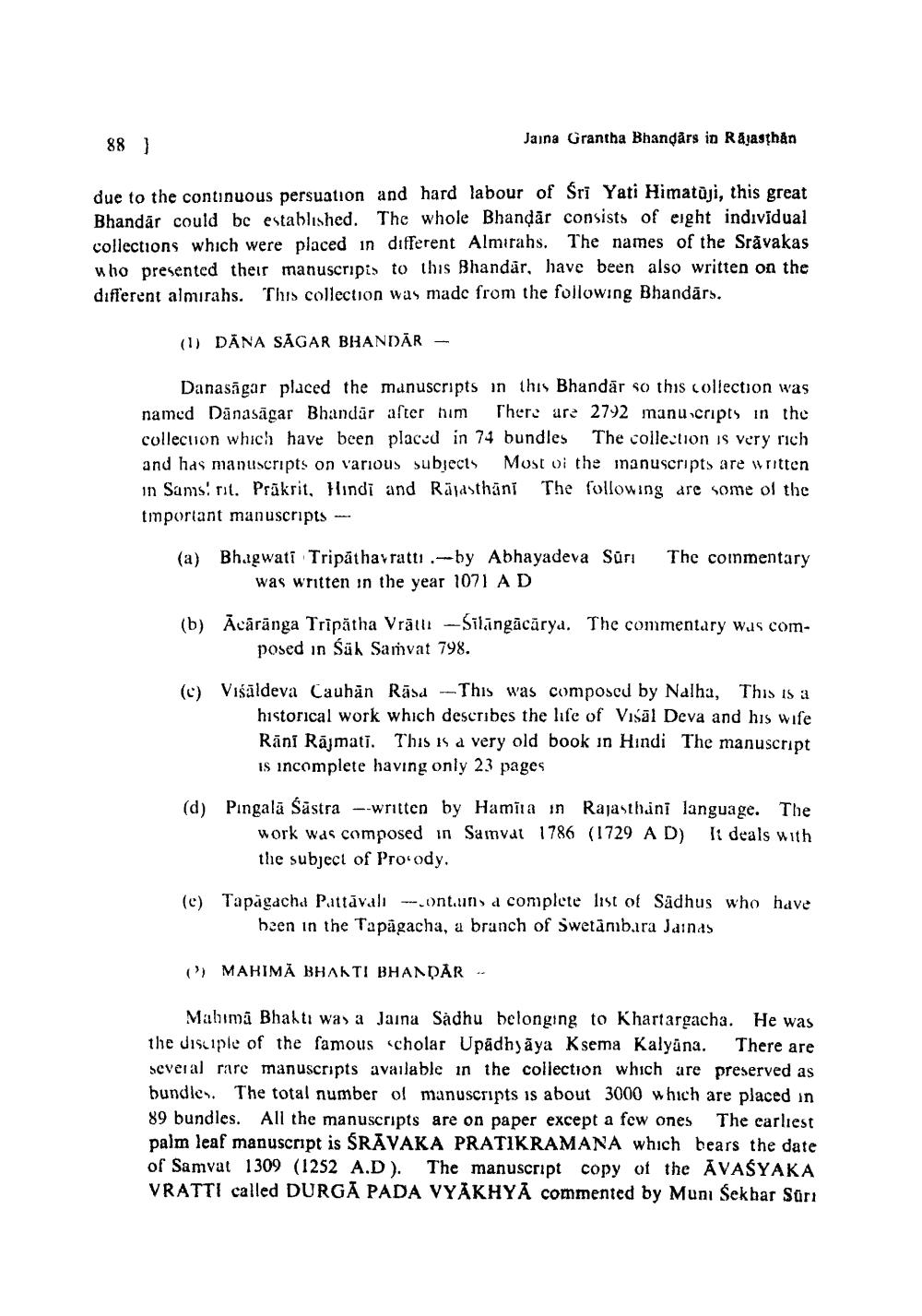________________
88 )
Jana Grantha Bhandars in Rajasthån
due to the continuous persuation and hard labour of Sri Yati Himatuji, this great Bhandar could be established. The whole Bhandār consists of eight individual collections which were placed in different Almirahs. The names of the Srāvakas who presented their manuscripis to this Bhandar, have been also written on the different almurahs. This collection was made from the following Bhandārs.
(1) DÄNA SAGAR BHANDĀR –
Danasāgar placed the manuscripts in this Bhandar so this collection was named Dānasāgar Bhandar after him There are 2792 manu cripts in the collecuon which have been placed in 74 bundles The collection is very rich and has manuscripts on various subjects Most oi the inanuscripts are written in Samsirit. Prākrit, Hindi and Rajasthani The following are some of the tmportant manuscripts -
(a) Bhagwati Tripāthayrattı .-by Abhayadeva Suri
was written in the year 1071 AD
The commentary
(b) Ācāränga Tripatha Vrällt - Silingācārya. The commentary was com
posed in Śük Samvat 798.
(c) Višāldeva Cauhan Rāsa -- This was composcd by Nalha, This is a
historical work which describes the life of Visal Deva and his wife Rāni Rājmati. This is a very old book in Hindi The manuscript is incomplete having only 23 pages
(d) Pingalā Šāstra --written by Hamiia in Rajasthani language. The
work was composed in Sainvat 1786 (1729 A D) I deals with the subject of Pro'ody.
(e) Tapagach. Pattavali - ontund complete list of Sadhus who have
heen in the Tapāgacha, a branch of Swetānibira Jainas
() MAHIMA BHAKTI BHANDAR --
Mahima Bhaktı was a Jaina Sadhu belonging to Khartargacha. He was the disciple of the famous cholar Upadhyāya Ksema Kalyana. There are several rare manuscripts available in the collection which are preserved as bundles. The total number of manuscripts is about 3000 which are placed in 89 bundles. All the manuscripts are on paper except a few ones The earliest palm leaf manuscript is SRĀVAKA PRATIKRAMANA which bears the date of Samvat 1309 (1252 A.D). The manuscript copy of the AVAŠYAKA VRATTI called DURGĀ PADA VYAKHYA commented by Muni Sekhar Sürı




